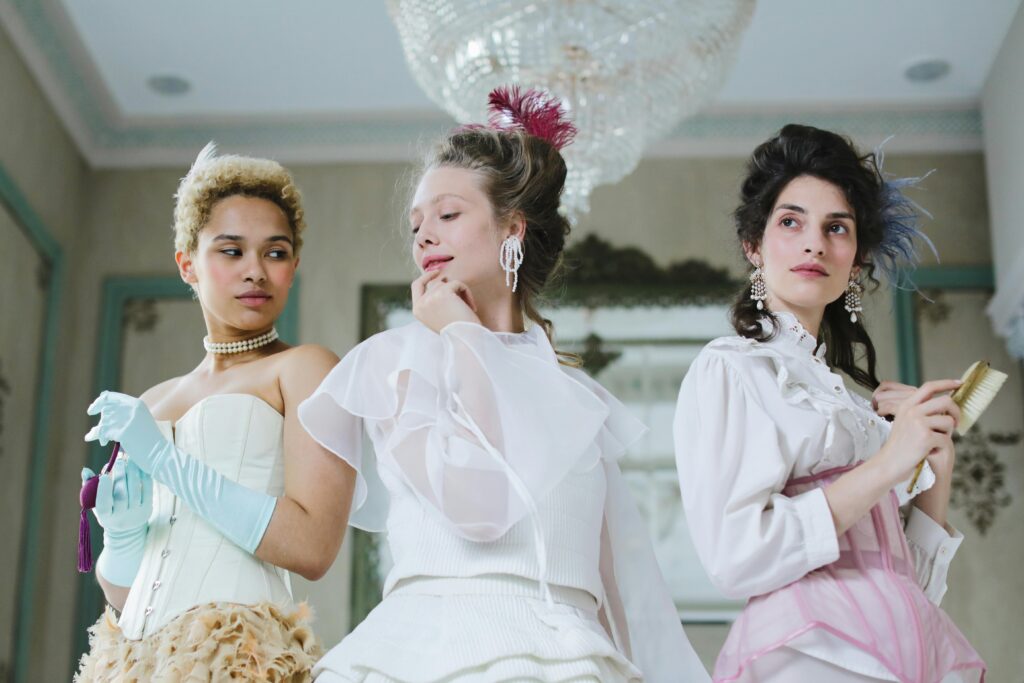The combination of rose, jasmine, and ylang-ylang has long been cherished in the world of perfumes and fragrances for its unmatched ability to create luxurious, floral scents that evoke elegance, romance, and depth. These three ingredients, often referred to as the “timeless trio,” bring together a blend of softness, sensuality, and exotic allure. Here, we delve into the unique qualities, benefits, and origins of these iconic florals, as well as their use in some of the most celebrated perfumes and fragrances of all time.
Rose: The Queen of Flowers
Feel and Benefits: Rose is synonymous with love and romance. It provides a rich, deep, and slightly sweet aroma, often with subtle hints of spice. In aromatherapy, rose is known to have calming and mood-enhancing properties, reducing stress and promoting emotional well-being.
Producing Countries: The finest roses for perfumes and fragrances are cultivated in:
- Bulgaria: Known for its “Bulgarian Rose” from the Valley of Roses.
- Turkey: Renowned for its production of the Rosa Damascena.
- India: Home to the fragrant Rosa Centifolia, often used in traditional attars.
Jasmine: The Flower of Sensuality
Feel and Benefits: Jasmine offers a heady, narcotic floral aroma that is both sensual and uplifting. Its sweet, exotic fragrance has aphrodisiac qualities and is often used to create a sense of confidence and harmony. Jasmine is also linked to relaxation and alleviating anxiety.
Producing Countries: Major producers of jasmine include:
- India: The largest producer, known for its Jasminum Sambac.
- Egypt: Famous for Jasminum Grandiflorum.
- Morocco: Another key player in jasmine cultivation.
Ylang-Ylang: The Exotic Bloom
Feel and Benefits: Ylang-ylang is prized for its creamy, sweet, and slightly fruity floral scent. It adds depth and richness to perfumes and fragrances, balancing the sharpness of other florals. In aromatherapy, it is used to alleviate stress, enhance relaxation, and promote a sense of joy.
Producing Countries: The best ylang-ylang comes from:
- Madagascar: Leading global producer.
- Comoros Islands: Known for high-quality ylang-ylang essential oil.
- Indonesia: A significant exporter of the flower.
Why the Trio Works
The harmony of rose, jasmine, and ylang-ylang lies in their complementary characteristics:
- Rose provides a deep and romantic foundation.
- Jasmine adds a luminous, sensual heart.
- Ylang-Ylang enhances the blend with its exotic, creamy sweetness. Together, they form a versatile base for both floral and oriental perfumes and fragrances.
Why Jasmine, Rose, and Ylang-Ylang Are Special
Jasmine
- Known as the “Queen of the Night,” jasmine has an intoxicating, sweet, and slightly animalic aroma.
- It adds sensuality and depth, making the fragrance feel rich and exotic.
- Jasmine’s aroma can range from fresh and green to heady and seductive, depending on how it’s extracted.
Rose
- Known as the “Queen of Flowers,” rose is universally recognized for its romantic and luxurious scent.
- It provides a rich, velvety sweetness with hints of green or fruity nuances, depending on the variety (e.g., Bulgarian rose, Turkish rose).
- Rose gives perfumes and fragrances a classic, elegant, and timeless feel.
Ylang-Ylang
Iconic Perfumes and Fragrances Featuring the Trio
- Often referred to as the “Flower of Flowers,” ylang-ylang has a creamy, exotic, and slightly fruity aroma.
- It softens the sharpness of jasmine and complements the richness of rose with its sweet, tropical undertones.
- Ylang-ylang also adds a unique buttery warmth, making perfumes and fragrances feel more rounded.
Chanel No. 5:
- Notes: Jasmine, Rose, Ylang-Ylang, Aldehydes.
- Why It Fits: The timeless floral bouquet enriched with powdery aldehydic notes makes it an iconic masterpiece.
Dior J’Adore:
Notes: Jasmine, Rose, Ylang-Ylang, Tuberose.
Why It Fits: Luxurious and sensual, it highlights the richness of this floral trio.
Guerlain Samsara:
- Notes: Jasmine, Rose, Ylang-Ylang, Sandalwood.
- Why It Fits: Ylang-ylang and jasmine blend seamlessly with creamy sandalwood, creating an exotic warmth.
Lancôme Trésor:
- Notes: Rose, Jasmine, Ylang-Ylang, Peach.
- Why It Fits: Romantic and fruity, it balances florals with soft fruity accords.
Estée Lauder Beautiful:
- Notes: Rose, Jasmine, Ylang-Ylang, Marigold.
- Why It Fits: A classic floral bouquet featuring creamy ylang-ylang and soft roses.
Tom Ford Velvet Orchid:
- Notes: Jasmine, Rose Oil, Ylang-Ylang, Vanilla.
- Why It Fits: A rich, warm floral-oriental scent that feels opulent and sophisticated.
Yves Saint Laurent Paris:
- Notes: Rose, Jasmine, Ylang-Ylang, Violet.
- Why It Fits: A feminine tribute to Paris, blending florals for a romantic masterpiece.
Roja Parfums Scandal Parfum:
- Notes: Jasmine, Rose, Ylang-Ylang, Lily of the Valley.
- Why It Fits: Luxurious and opulent, with a focus on ylang-ylang’s creamy sweetness.
Amouage Reflection Woman:
- Notes: Jasmine, Rose, Ylang-Ylang, Magnolia.
- Why It Fits: A soft and luminous profile with delicate floral notes.
Clive Christian No. 1 for Women:
- Notes: Jasmine, Rose, Ylang-Ylang, Orris.
- Why It Fits: Lavish and extravagant, showcasing the best of this floral trio.
Conclusion
The combination of rose, jasmine, and ylang-ylang has cemented its place in the world of luxury perfumes and fragrances. From their enchanting scents to their calming and uplifting properties, these flowers bring unmatched depth and sophistication to fragrances. Whether used in iconic classics like Chanel No. 5 or in modern creations, this trio continues to captivate hearts and redefine elegance in the art of scent-making.

